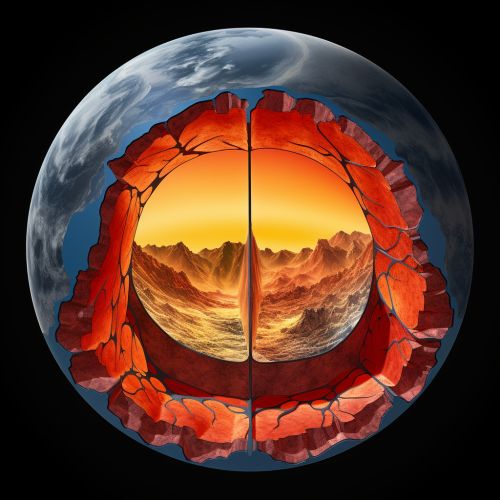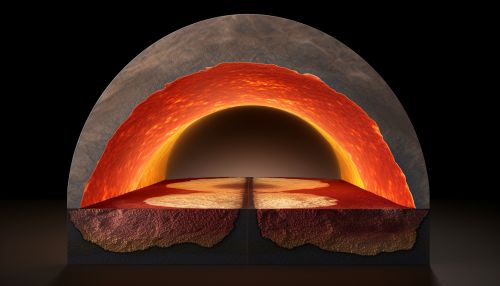Earth's Core-Mantle Boundary
Introduction
The Earth's Core-Mantle Boundary (CMB) is the interface separating the planet's Mantle and Core. This boundary is located approximately 2,890 kilometers beneath the Earth's surface. The CMB is a region of profound geophysical importance, playing a crucial role in the Earth's internal dynamics, including plate tectonics and geomagnetism.


Structure of the Core-Mantle Boundary
The CMB is characterized by a sharp increase in density, from the lower mantle's 5.5 g/cm³ to the outer core's 9.9 g/cm³. This dramatic change in density is primarily due to the transition from silicate-based mantle material to iron-nickel alloy in the core. The boundary is also marked by a significant increase in temperature, with estimates ranging from 3,500 to 4,000 degrees Celsius.
Seismic Observations
Seismic observations have provided much of our current understanding of the CMB. Seismic waves, generated by earthquakes and monitored by networks of seismometers, change speed and direction when they encounter the boundary. These changes, known as seismic discontinuities, have been instrumental in mapping the CMB's depth and structure.
Core-Mantle Interaction
The CMB is not just a passive boundary; it is a site of active interaction between the mantle and core. This interaction is driven by heat transfer, with the core cooling and solidifying at the boundary, releasing latent heat and lighter elements into the mantle. This process, known as mantle convection, drives plate tectonics and contributes to the Earth's magnetic field.
The D Layer
The D (pronounced 'D double prime') layer is a thin, complex region located just above the CMB. It is characterized by significant variations in seismic velocity, suggesting a complex composition and structure. The D layer is thought to play a crucial role in mantle convection and the generation of the Earth's magnetic field.
The Ultra-Low Velocity Zones
Ultra-Low Velocity Zones (ULVZs) are small, localized regions at the CMB where seismic waves significantly slow down. These zones, typically a few tens of kilometers thick, are thought to be composed of partially molten material, possibly enriched in iron and other heavy elements. ULVZs are of particular interest as they may influence the dynamics of both the core and the mantle.
The Large Low Shear Velocity Provinces
The Large Low Shear Velocity Provinces (LLSVPs) are two massive regions, located beneath Africa and the Pacific Ocean, where seismic velocities are significantly lower than surrounding areas. These provinces, which extend up to 1,000 kilometers into the mantle, are thought to be composed of chemically distinct material. The origin and nature of the LLSVPs are subjects of ongoing research and debate.
Conclusion
The Earth's Core-Mantle Boundary is a region of profound geophysical importance. It is a site of complex interactions and processes that influence the dynamics of the entire planet. Despite significant advances in our understanding, many aspects of the CMB remain enigmatic, making it a vibrant area of ongoing scientific research.
